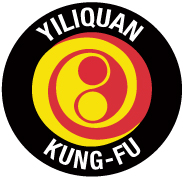The term, “kung-fu” (also, “gong-fu”) is a generic used to refer to martial arts of China. However, as many of you probably already know, it is something of a misnomer. “Kung-fu” actually refers to a high level of skill in a particular craft that is achieved through arduous practice over a lengthy period of time. Thus, a highly-skilled carpenter may be said to possess a lot of “kung-fu.” The correct term for martial arts is really “wushu” (which literally means, “martial art(s)”), but in the latter part of the 20th century both of these terms came to mean something else.
“Kung-Fu” became an all-inclusive term for Chinese martial arts, whereas “wushu” came to refer to a performing art that includes gymnastic maneuvers as well as martial arts postures and movements, along with a touch of Chinese opera. Contemporary wushu is not and was never intended for actual combat.
Oddly enough, in contemporary China the term “kung-fu” is used to refer to the real combat-oriented forms of Chinese martial ways. They understand that wushu is intended only for aesthetic appeal.
The martial arts of China date back more than 5,000 years and gave birth to numerous present-day forms such as karate which, in turn, gave birth to taekwondo, forms of jujutsu (which gave birth to modern judo and even aikido), Muay-Thai (Thai boxing), Silat, and numerous others.
Over several millenia, a great many styles of kung-fu developed. In the north of China, people often rode horses over the wide plains and hills. The forms of kung-fu that developed in the northern were often called “beiquan” (northern fists) or “changquan” (long fists). Their stances often tended to be longer than those used in the south, their fighting techniques includes high kicks, artful spins and long-range punches. Some of the better-known northern styles include Changquan (long fists), Eight-Step and Seven-Star forms of Tong Long (praying mantis), and Eagle-claw.
In southern China, living conditions were very crowded in cities with very narrow alleyways. Many people lived on houseboats (many still do), which were/are quite small. There was simply no room for high kicks and long punches and this is reflected in the southern forms, which came to be known as “nanquan” (southern fists) or “short fists.” Stances are often higher and shorter than those found in the north, punches are shorter and kicks tend to be aimed low. Because of the crowding, there was a tendency to grapple, so joint-twisting techniques (quin-na) became very popular. Well-known southern styles include Wing Chun, Southern Dragon, White Eyebrow, Tsai Li Fo (Choy Lee Fut), Hung-Ga, and Fut-Ga.
To further divide the forms of kung-fu, we have the so-called “internal” sand “external” schools. This categorization was made inthe 1930’s by a famous Chinese pugilist named Sun-Lutang. The “internal” styles originally numbered only three (now there are several more) and they are referred to as “neijia” (internal school) because they emphasize the development and manipulation of “internal energy” or “vital force” known as qi. This allows them to strike with almost superhuman force while also being able to withstand extremely heavy blows. The three original internal style (the three sisters) are Taijiquan (aka., Tai-Chi Chuan), Xingyiquan, and Baguazhang. Of course, there are several styles of each.
The other schools of kung-fu were to be referred to as “waijia” (external schools) because of their emphasis on the development of raw strength and their reliance on the larger muscles of the body.
A unique feature of kung-fu is that advanced training phases include learning the use of traditional weapons. There are only four basic weapons and these include the staff, spear, sword, and broadsword. Different styles utilize a variety of other weapons such as the deer-antler swords, double daggers, double hooked swords, butterfly knives, tiger, guan-dao (a type of halberd), but most of them also employ the four basic weapons.
Additionally, there is/was an old tradition that emphasized that advanced students should also learn one of the traditional healing arts, which includes herbal medicine, tui-na (Chinese massage and chiropractic), acupuncture, and qigong (training to strengthen and manipulate one’s life-force). Unfortunately, this age-old custom has all but died out.
To study kung-fu requires strength of spirit, perseverance, and dedication. There is no way to hurry it; the path IS the goal… For those interested in figuratively (and to some degree, literally) rolling up your sleeves and learning an art which is set deep within the soul of ancient China, kung-fu will be your cup of tea!
